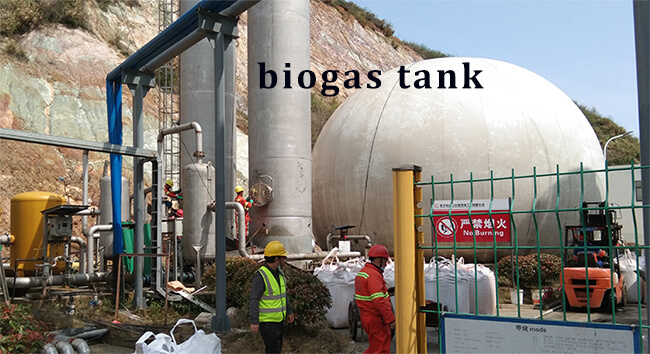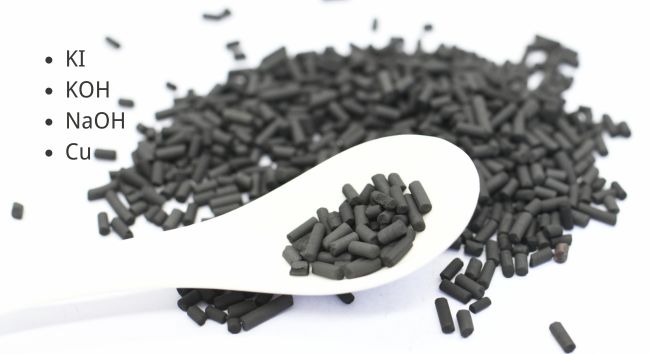Introduction
Biogas, as a significant renewable energy source, not only provides us with clean energy continuously but also effectively processes organic waste, reducing environmental pollution. However, raw biogas contains impurities such as hydrogen sulfide and volatile organic compounds (VOCs), which not only decrease its utilization value but also pose potential threats to the environment and human health. Activated carbon, with its excellent adsorption capacity and renewability, plays a vital role in biogas purification.Sources and Composition of Biogas:
Biogas is a mixed gas produced by microorganisms decomposing organic matter. Its main sources include:
• Sewage treatment plants• Agricultural waste treatment
• Municipal waste composting
Its main components include:
• Methane (CH4): 50% to 70%, the main energy component of biogas.• Carbon dioxide (CO2): Approximately 30% to 50%.
• Hydrogen Sulfide (H2S): A toxic gas harmful to the environment and humans even in extremely small concentrations.
• Ammonia (NH3): Usually present in small proportions as an impurity.
• Siloxanes: Compounds that can cause equipment corrosion and clogging.

Application of Activated Carbon in Biogas Treatment:
Biogas is a mixed gas produced by microorganisms decomposing organic matter. Its main sources include sewage treatment plants, agricultural waste treatment, municipal waste compost, etc. Its main ingredients include:• Methane (CH4): it accounts for 50% to 70% of biogas. Methane is the main energy component of biogas.
• Carbon dioxide (CO2): it accounts for approximately 30% to 50% of biogas. Carbon dioxide is released along with methane.
• Hydrogen Sulfide (H2S): it is a toxic gas that can cause harm to the environment and humans even in extremely small concentrations.
• Ammonia (NH3): it is also an impurity in biogas, usually in a small proportion.
How to choose Activated carbon for biogas?
Activated carbon is a porous material with extremely strong adsorption capacity, capable of removing harmful gases in biogas through physical and chemical adsorption.
Virgin Activated Carbon:
• Mainly removes harmful gases such as hydrogen sulfide through physical adsorption.• Hydrogen sulfide molecules are adsorbed through the micropores of activated carbon and physically interact with its surface, effectively separating them.
KOH-Impregnated Activated Carbon:
• Widely used in biogas purification due to its highly alkaline surface.• KOH effectively adsorbs H2S and reacts with it to generate potassium sulfide, converting H2S into non-volatile sulfide, greatly reducing its environmental impact.
KI-Impregnated Activated Carbon:
• Another common type of impregnated carbon, characterized by its strong adsorption capacity for siloxanes.• KI chemically reacts with siloxanes to form relatively stable compounds, which are effectively adsorbed and removed, protecting equipment from corrosion and clogging.
Choosing the Right Activated Carbon:
Selecting the appropriate activated carbon for biogas treatment is a critical decision that can significantly impact the efficiency and cost-effectiveness of your purification process. Here are key factors to consider:
• Specific composition of the biogas• Gas flow rate
• Required removal efficiency
• Operating conditions (e.g., temperature, pressure)
• Economic considerations
Conclusion:
Activated carbon plays a crucial role in biogas desulfurization, and its excellent adsorption properties make it an ideal choice for removing harmful gases from biogas. By effectively removing impurities such as hydrogen sulfide and siloxanes, activated carbon not only improves the quality and utilization value of biogas but also makes a significant contribution to environmental protection.
If you have biogas treatment projects or needs, we welcome you to collaborate with professional activated carbon suppliers such as Zhulin Carbon. Zhulin Carbon is an enterprise specializing in the research, development, production, and sales of activated carbon. With advanced production technology and rich experience, we provide customers with high-quality activated carbon products and solutions. By cooperating with Zhulin Carbon, you can obtain customized activated carbon products to meet the specific needs of your biogas desulfurization project and improve its efficiency and sustainability.

